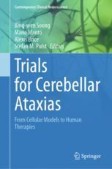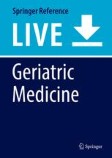Search
Search Results
-
Cerebellar Physiology
The cerebellum is typically associated with motor control although there is now extensive evidence that its involvement extends into other domains...
-
Airways: Physiology
To comprehend nasal physiology, it is necessary first to appreciate the functions the nose performs. Suitably warmed and moistened air can only be...
-
Fontan Physiology
The Fontan procedure represents the final stage of univentricular repair by which the entire systemic venous return is channelled to the pulmonary...
-
Lactation Physiology
Lactation is a complete process of milk synthesis and secretion including development of mammary gland (mammogenesis), initiation of milk synthesis...
-
CSF Physiology
The entire cerebral cavity surrounding the central nervous system has a volume of approximately 1700 ml. From this capacity, 150 ml stands for...
-
Excretory Physiology
In all organisms, the excretory system maintains the internal aqueous and ionic environment for homeostasis. The organs of the renal system,...
-
Shunt Physiology
Insertion of a systemic-to-pulmonary arterial shunt is an important palliative surgical intervention in cyanotic patients with inadequate pulmonary...
-
Physiology of Aging
With aging, there is an apparent depletion of physiologic reserves that has been termed homeostenosis. When the reserves are depleted, the older...
-
Physiology
Effective invasion mechanism aids different worms of parasitic nature to set foot in their host body. Different identifying machineries indicate...
-

-

-
Physiology of Aging
With aging, there is an apparent depletion of physiologic reserves that has been termed homeostenosis. When the reserves are depleted, the older...
-
Physiology of Menopause
Menopause is the natural transition in the female lifespan when the menstrual cycle ceases and reproductive capabilities are eliminated. This...
-
Physiology of Aging
Elderly population is growing at a rate never seen before. By 2030, the elderly are expected to make up 21% of the population. This will affect all...
-
Physiology of Labour
Human gestation lasts for 40 weeks. During this, phases of uterine quiescence and cervical competence nurture the foetus. Near term, for reasons not...
-
Physiology of Heat Stress
Heat is transferred to and from the human body by four mechanisms: convection, conduction, radiation, and evaporation (which is actually a form of...
-
Fetal Cardiovascular Physiology
Fetal cardiology is a rapidly evolving subfield of pediatric cardiology. Advances in this field are largely driven by progress in fetal imaging...
-
Pediatric Cardiovascular Physiology
Cardiac physiology is the underlying mechanism of the cardiovascular system which works in a beat-to-beat manner, especially in patients with...
-
Fetal Cardiovascular Physiology
Our understanding of fetal cardiovascular physiology has markedly increased in the last 50 years, with the introduction of suitable animal models....
-
Physiology: Nasal Airflow
The respiratory function of the nose is to warm, humidify, and clean the inspiratory air in order to optimize proper gas exchange in the lungs. This...
